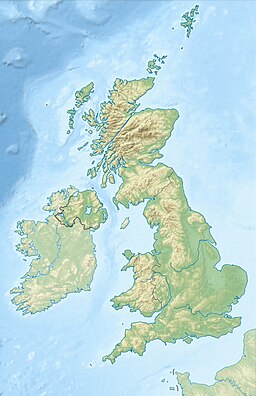Nayland
| Nayland | |
(c) Robert Edwards, CC BY-SA 2.0 High Street, Nayland | |
| Land | |
|---|---|
| Riksdel | England |
| Region | Östra England |
| Ceremoniellt grevskap | Suffolk |
| Administrativt grevskap | Suffolk |
| Distrikt | Babergh |
| civil parish | Nayland-with-Wissington |
| Koordinater | 51°58′16″N 0°52′26″Ö / 51.971122°N 0.873880°Ö |
| Area | 0,563 km² |
| Folkmängd | 929 (2015) |
| Befolkningstäthet | 1 650 invånare/km² |
| Tidszon | UTC (UTC+0) |
| - sommartid | BST (UTC+1) |
| Geonames | 2641850 |
Läge i Storbritannien | |
Nayland är en by i Nayland-with-Wissington, Babergh, Suffolk, England. Orten har 929 invånare (2015).[1] Den har en kyrka.[2][3] År 1884 blev den en del av den då nybildade Nayland-with-Wissington.[4] Byn nämndes i Domedagsboken (Domesday Book) år 1086, och kallades då Eilanda.[5] Parish hade 901 invånare år 1881.[6]
Referenser
- ”NAYLAND”. GENUKI. http://www.genuki.org.uk/cgi-bin/maplink?CCC=SFK,GR=TL975342,PLACE=NAYLAND. Läst 28 december 2016.
- ^ ”Nayland (Suffolk)”. City Population. https://www.citypopulation.de/php/uk-england-eastofengland.php?cityid=E34002049. Läst 28 december 2016.
- ^ http://www.suffolkchurches.co.uk/nayland.htm
- ^ http://www.britishlistedbuildings.co.uk/en-278402-church-of-st-james-nayland-with-wissingt
- ^ UKBMD. ”Sudbury Registration District”. https://www.ukbmd.org.uk/reg/districts/sudbury.html. Läst 18 december 2021.
- ^ The Domesday Book online. ”Suffolk N-R”. http://domesdaybook.co.uk/suffolk5.html#nayland. Läst 23 december 2016.
- ^ ”Population statistics Nayland CP/Ch through time”. A Vision of Britain through Time. https://visionofbritain.org.uk/unit/10264364/cube/TOT_POP. Läst 18 december 2021.
Media som används på denna webbplats
Författare/Upphovsman: Alexrk2, Licens: CC BY-SA 3.0
Location map of the United Kingdom
Shiny red button/marker widget. Used to mark the location of something such as a tourist attraction.
(c) Robert Edwards, CC BY-SA 2.0
'The White Hart' inn, High Street, Nayland The building was originally built in the 15th Century, although the frontage was changed in 1789 to give a tunnel entrance wide enough for a carriage to pass through for the profitable coaching trade.





